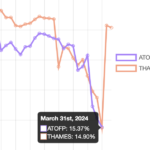The news that the San Francisco Fed is parting company with its head of banking supervision, Azher Abbasi, is easy to connect with the failure of Silicon Valley Bank, and the supervisory problems acknowledged in the Fed’s April 2023 post-mortem on SVB. But it is also connected with the 1,087-page regulatory proposal published by the Fed in July, which it calls the Basel endgame.
That’s because supervision is the other side of the coin of regulation: neither works without the other. The SVB failure was partly blamed on weak and sluggish supervision by Abbasi’s team, prompting the Fed’s supervisory chief Michael Barr to promise tougher regulation. But regulatory capital requirements need supervisors to implement and monitor them. If these requirements are too complex for supervisors, then they are likely to fail.
We can see this tension in the Basel endgame. It may be a huge, multifaceted document but the most consequential part is that the Fed has finally kissed goodbye to its long flirtation with Basel internal credit and operational risk models.
I’ve been following this debate for over a decade, all the way back to the Dodd-Frank Act when Congress mandated the Fed to implement Basel internal models for credit and operational risk (market risk was already subject to internal models under Fed rules).
 Levelling the Playing Field
Levelling the Playing Field
 Barclays and Labour's growth plan
Barclays and Labour's growth plan
 Plummeting bonds reflect souring UK mood for outsourcing and privatisation
Plummeting bonds reflect souring UK mood for outsourcing and privatisation
 Dimon rolls trading dice with excess capital
Dimon rolls trading dice with excess capital